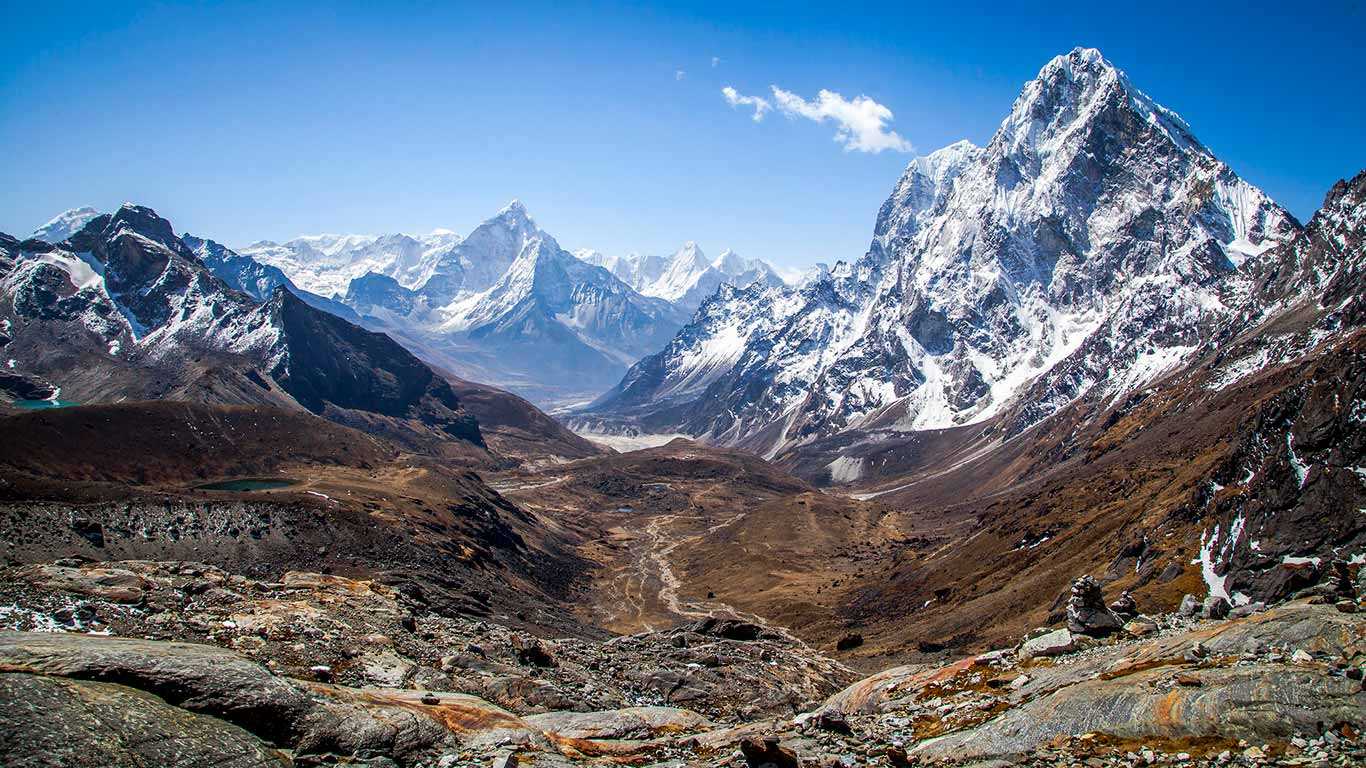Best time to do Everest High Pass Trek:
Trekking in Nepal is indeed a fantastic experience, offering diverse landscapes and breathtaking views throughout the year. Spring and autumn are particularly popular for trekking in the Everest Region, which includes the three passes.
Spring Trekking in the Everest Region:
- Breathtaking Views: Spring offers stunning views of ice-capped mountains, vibrant hills, and expansive Himalayan pastures.
- Blooming Flora: Rhododendrons and other spring flowers bloom in lower areas, adding to the beauty of the landscape.
- Snow-Covered Mountains: The aftermath of winter snowfall leaves snow-covered mountain ranges above Namche Bazaar, providing endless picturesque views.
- Ideal Weather: Days are sunny, warm, and bright, with longer daylight hours, creating optimal conditions for trekking.
Autumn Trekking in the Everest Region:
- Clear Blue Skies: Autumn brings clear blue skies and bright, sunny days, offering excellent visibility and stunning panoramas.
- Dry Routes: Trekking routes dry up after the monsoon season, providing stable and favourable weather conditions.
- Lush Greenery: Hills become lush and green after the monsoon rains, while mountains showcase their best features.
- Moderate Temperatures: Daytime temperatures hover around 20 degrees Celsius, with nighttime temperatures dropping to around 5 degrees Celsius below 3500 metres altitude. Higher altitudes experience colder nights, with daytime temperatures reaching around 20°C and nights dropping below freezing.
Permits required for Everest High Pass Trek:
The Everest High Passes Trek requires the following permits:
1. Sagarmatha National Park Fee
2. Khumbu Pasang Lhamu Municipality Permit
Note: Both of these permits are included in our Everest High Passes Trek Package.
Everest High Pass Trekking Package:
Red Rose Tours & Travels offers the Everest high pass Trekking Package, which includes
- Airfare from Kathmandu to Lukla and the other way around
- Breakfast, lunch, and supper are all included in the journey meals.
- Accommodations for the journey
- A porter for each of the two trekkers and a guide
- All of the paperwork required for an Everest High Pass, including TIMS permits and national park permits
- An excellent first aid kit includes an oximeter and oxygen for emergencies.
- We've taken care of all government taxes, VAT, and service fees.
- Welcome and farewell dinner with fellow trekkers and our guides
- In the event of an emergency, a helicopter service is covered by your travel insurance
Food and Accommodations:
Food: The way of life in the Himalayas is distinct and challenging, and the cuisine is likewise diverse. There will be many tea places along the Everest High Pass Trek that serve both vegetarian and non-vegetarian food.From hot and comforting thukpa and other regional specialities to, in certain locations, foreign cuisine as well.
Accommodations: The accommodations at Tea Hoses on the Mountain are extremely basic. The rooms usually have just two or three single beds, warm blankets, pillows, cosy matrices with connected bathrooms (but not always), and pleasant views. We will also make sure you are accommodated in the best tea houses with stunning views of the surrounding landscape and mountains during your journey.
Trek Difficulty:
Parts of the Everest High Pass Trekking can be difficult and demanding, especially when there is a large climb involved.Thus, for the Everest High Pass hike, a moderate degree of fitness is ideal.
Your eligibility for the Everest High Pass hike will be determined by how frequently you work out at the gym, swim, or run. You can walk for 30 to 45 minutes every day for at least 30 days if you are not very active. Try performing as many stairmaster exercises as you can.
WIFI Connections in Everest High Pass Trek:
Although guest hotels and tea shops along the Everest Base Camp route offer internet connectivity, the quality of the connection can be fairly variable.
For a little cost, some guest houses might provide Wi-Fi, however, the connection quality might not be good enough for frequent use. It's also possible that some tea shops have no Wi-Fi at all, so it's not a good idea to rely just on these connections while trekking.
Everest High Pass Trekking safety measures:
It is not uncommon to become sick while hiking. Altitude sickness can be dangerous at high altitudes if we do not react to early signs or take measures. The following actions should be taken to try to prevent altitude sickness:
Proper Acclimatization Rest:Acclimatization rest is an essential component of high-altitude trekking. You must walk as high as you can during acclimatisation and then return to a lower altitude for the night. In addition to preventing altitude sickness, the acclimatisation phase enables the body to recover its worn-out muscles, which will be beneficial for hiking.
Avoid alcohol, cigarettes, and tobacco: As everyone knows, air oxygen content decreases as altitude rises. Additionally, consuming cigarettes, alcohol, or both throughout the Everest high pass journey will decrease the body's water content and eventually make altitude sickness easier to hamper you. Therefore, it is strongly advised that you avoid alcohol and tobacco products of any kind while on the trek.
If you have any other questions or want to inquire more, please feel free to email or contact us.







